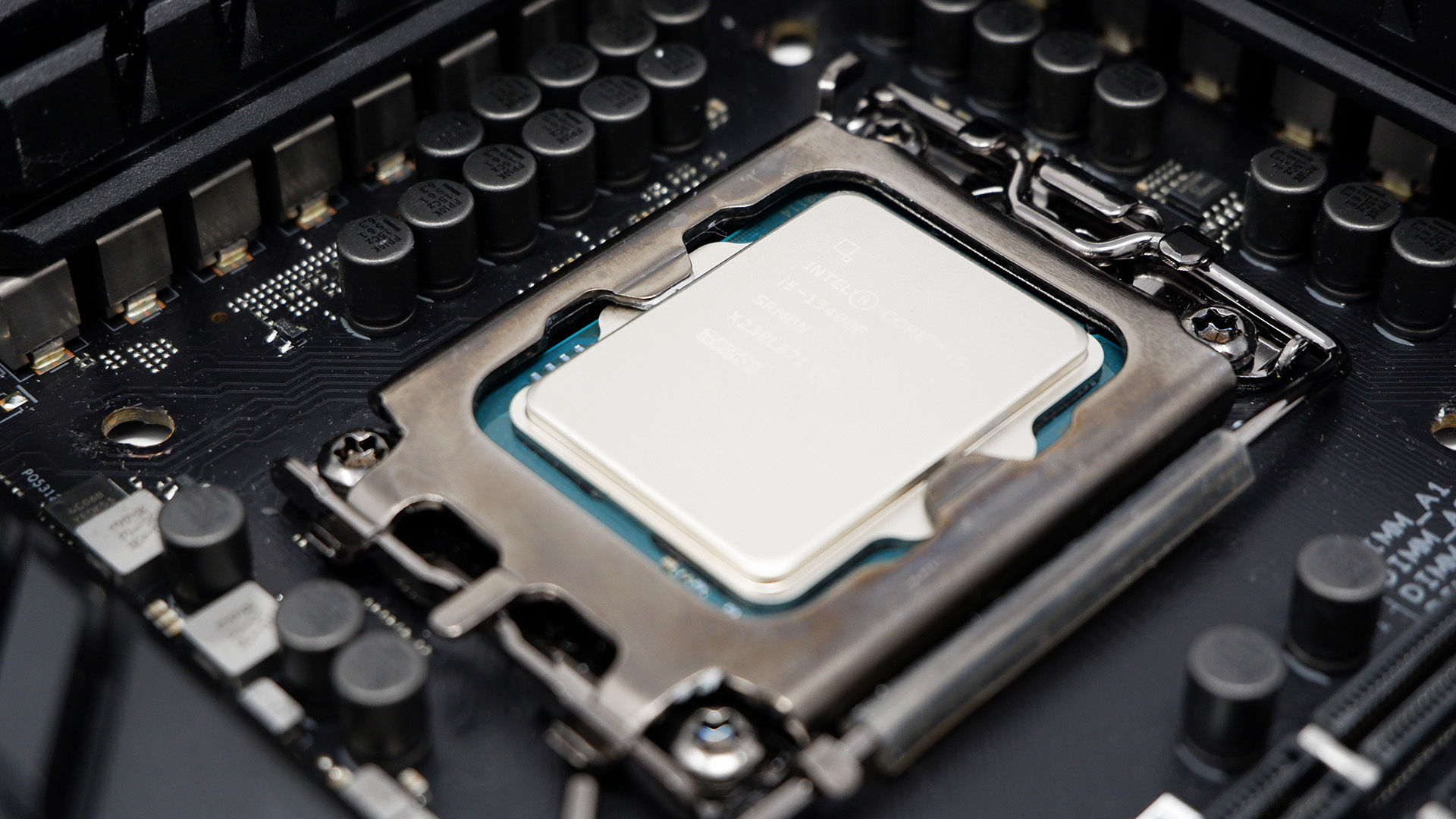
Arrow Lake looks like it will give us an even better chance of ruining things when mishandling the motherboard. Sweet.
The new Intel CPU socket, set to house the upcoming Arrow Lake desktop processors, has been unveiled. In a bit of a weird way. It’s going to be the socket for desktop versions of the Meteor Lake chip architecture, which are only going to appear in the boring embedded space.
At this year’s Embedded World conference in Germany, Intel has been letting visitors get all handsy with its new embedded Meteor Lake platform. The previously laptop-only chips don’t require a separate motherboard chipset, so they’re perfect from the space-restricted embedded sector. But something else that was showcased at the event was the LGA 1851 processor socket—Intel’s replacement for LGA 1700, the socket which has been in service since the 12th Generation of Core CPUs.
We’ve known Intel was moving to a new socket design for its post-Raptor Lake desktop processors for quite some time. But a report on the Embedded World event by ComputerBase confirms all of the details and has pictures of the new socket if you want to see all those new pins in detail.
Intel has retained the same 37.5 mm × 45 mm socket size but stuffed an additional 151 pins into the same area. To prevent you from trying to fit an LGA 1700 chip into the socket, though, notches in the plastic surround are in a different location.
Some of the extra pins are going to be for PCI Express lanes, but I suspect quite a few of them won’t be used until later processors require them. The latest 14th Gen Core CPUs offer 16 PCIe 5.0 and four PCIe 4.0 lanes, and the higher spec ones can be split into two groups of eight, allowing for a PCIe 5.0 SSD, like the Nextorage X series, to be directly connected to the CPU.
However, that essentially wastes four lanes and there’s no way around this. In some motherboards, putting any SSD into the dedicated PCIe 5.0 M.2 slot forces the main graphics card slot into x8 mode. With LGA 1851, that problem will be a thing of the past, because even though the next generation of desktop CPUs will still only have 20 PCIe 5.0 lanes at most, they can be split into three groups: x8, x4, and x4.
AMD’s AM5 socket is of a similar design, albeit completely square (40 x 40 mm) and with over a hundred fewer pins, 1718 in total. Zen 4 processors have up to 28 PCIe 5.0 lanes, 16 for graphics, eight for SSDs, and four to connect to the motherboard chipset (Intel has a similar system for its chips, but it’s not quite PCI Express).
So you might be wondering how does AMD manage to have 24 lanes of PCIe 5.0 but Intel only has 20? What are the extra pins in LGA 1851 for, if it’s not just for connectivity? At this stage, it’s not entirely clear—Intel is switching to DDR5-only for all its forthcoming CPUs, so the memory system has been simplified.
(Image credit: Future)
Best CPU for gaming: The top chips from Intel and AMD.
Best gaming motherboard: The right boards.
Best graphics card: Your perfect pixel-pusher awaits.
Best SSD for gaming: Get into the game ahead of the rest.
It’s possible a good number of the additional connections are for power and grounding, but we’ll just have to wait and see.
I have the feeling that one thing will become obvious once LGA 1851 motherboards are fully out in the wild: All those pins, squished into quite a small area, are ripe for being bent or flattened by ham-fisted PC builders, who aren’t careful when handling the board or inserting the CPU.
While a 9% increase in pin density isn’t especially big, you’ll certainly need to be a tad more delicate when building a PC with one of Intel’s next CPUs. But at least with the socket size staying the same, you stand a good chance of using most LGA 1700 coolers with an Arrow Lake processor.





